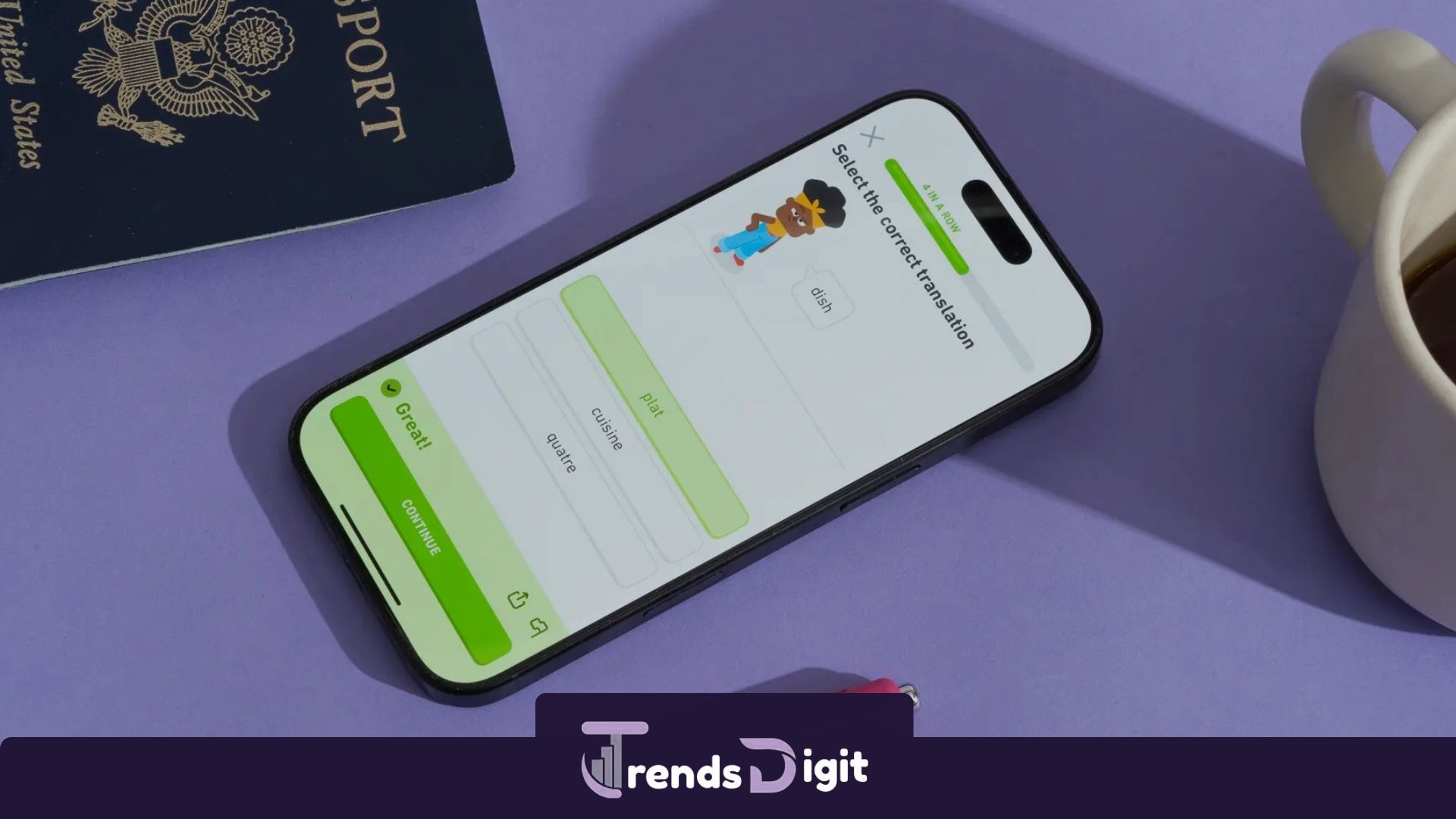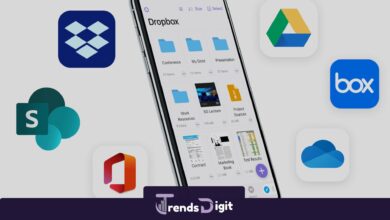Audiobook and Language Learning Apps for Trips
Traveling presents a unique opportunity to combine entertainment and self-improvement. Audiobook and language learning apps for trips allow travelers to use idle time efficiently, improving language skills while enjoying engaging content. These apps help users develop vocabulary, enhance pronunciation, and immerse themselves in the local culture. Beyond learning, they provide entertainment during long commutes or waiting periods. This article explains how to choose the best apps, maximize travel learning, and integrate these tools into your journey seamlessly, ensuring that every moment in transit becomes productive and enjoyable. Stay with us at TrendigiNews.
.
Why Audiobook and Language Learning Apps for Trips Matter
Travel often comes with extended periods of inactivity, such as long flights, train rides, and waiting at airports. Using these periods wisely allows travelers to practice a new language or enjoy audiobooks without interrupting their journey. Language learning apps help users gain confidence, communicate effectively with locals, and navigate unfamiliar places with ease. Audiobooks complement language learning by providing natural listening practice, cultural context, and storytelling that improves comprehension. Even a basic understanding of local phrases can transform interactions, making travel experiences richer and more meaningful.
Enhancing Learning During Travel
Using apps during travel helps travelers combine relaxation and education efficiently. Listening to native speakers while commuting improves pronunciation and retention. By engaging with content during downtime, travelers can reinforce what they have learned and gradually build confidence to speak the language in real situations. This approach allows learners to maximize small time pockets that might otherwise be wasted.
Cultural Immersion on the Go
Language apps often include cultural stories, dialogues, and local expressions. These elements enhance understanding of customs, etiquette, and everyday interactions. Travelers who use apps in this way can participate more fully in local experiences, from ordering food to exploring local neighborhoods. Audiobooks provide stories and narratives that showcase cultural nuances, making the learning process more engaging and contextually rich. Top 7 Productivity Apps for Remote Workers
.
Key Features to Look for in Language Learning Apps for Trips

When selecting audiobook and language learning apps for travel, it’s essential to consider features that enhance convenience, engagement, and practical application. The right app can transform travel time into productive learning sessions, making language acquisition both enjoyable and effective.
Offline Access and Downloadable Content
When traveling, internet access is not always guaranteed. Apps that allow offline downloads ensure uninterrupted learning during flights, bus rides, or remote areas. Offline access enables learners to continue studying without stress or dependency on unstable connections. Preparing content in advance ensures travelers have access to lessons and stories whenever needed.
Travel-Relevant Phrases and Lessons
Apps designed for travel focus on phrases and vocabulary that matter most during trips. Examples include greetings, asking for directions, ordering meals, and handling emergencies. Learning phrases in context allows travelers to use them immediately upon arrival. Apps that simulate real-life scenarios improve confidence and make interactions smoother.
Dual-Mode Listening and Reading
Some apps combine audiobooks with side-by-side text, showing the target language alongside the native language. This dual-mode approach strengthens comprehension and vocabulary retention. Users can listen to pronunciation while reading, reinforcing correct speech patterns. For travelers, this feature allows multitasking, such as listening while walking or reading while waiting.
Pronunciation and Listening Tools
Effective apps provide features like slow playback, repetition, and speech recognition. Travelers can practice pronunciation by mimicking native speakers and recording their own voice. Listening comprehension improves as users replay challenging sections. Such tools make language learning more interactive and practical for real-world situations.
Short, Focused Lessons and Gamification
Travel often presents fragmented time slots, so short lessons of five to ten minutes are ideal. Gamification, quizzes, and interactive exercises keep learners engaged. These elements encourage consistent practice, even during brief periods of waiting. Travelers can progress steadily without committing to long sessions.
Customization and Progress Tracking
Top apps let users set learning goals, monitor their progress, and adapt lessons to individual skill levels. Travelers can focus on essential phrases for their trip, reinforcing areas of weakness. Personalized tracking ensures that learners prioritize content most relevant to travel situations.
Cultural Insights and Contextual Learning
Apps that include cultural insights and authentic storytelling help learners understand how language is used in context. Travelers gain knowledge of local customs, expressions, and etiquette. This understanding improves real-world communication and allows learners to interact naturally with locals. Audiobooks with cultural narratives provide additional exposure to the target language in a meaningful context.
.
How to Maximize Your Use of Learning Apps for Trips
Using apps effectively during travel requires strategy and consistency. Travelers who plan ahead, alternate between different learning methods, and apply skills in real-life situations gain the most from their apps. Maximizing app use involves preparation, smart scheduling, active engagement, and combining audio with practical exercises. Below are practical steps to make learning productive, enjoyable, and relevant while traveling.
Prepare Before Traveling
Download lessons, audio stories, and necessary phrases before departure. Identify core vocabulary that will be useful during the trip. Practicing at home ensures immediate usability upon arrival. Preparation reduces stress and allows learners to focus on applying skills in real situations.
Utilize Transit Time Strategically
Use flights, train rides, and bus journeys to alternate between listening and active practice. Start with an audiobook or story to build comprehension, then switch to short lessons or exercises. This strategy maximizes downtime and keeps learning consistent throughout the trip.
Practice Speaking Alongside Listening
Listening alone is insufficient for language retention. Travelers should repeat phrases aloud, mimic native speakers, and record themselves if possible. Speaking reinforces memory and develops confidence for real-life interactions. Practicing daily, even in short bursts, produces measurable progress over time.
Apply Learning in Real Situations
Use phrases learned in the app at the destination. Ordering food, asking for directions, or greeting locals provides immediate reinforcement. Real-world application strengthens memory and helps learners adjust to natural conversation patterns. Interaction in authentic settings improves fluency faster than passive study.
Combine Audiobooks with Language Lessons
Switch between structured lessons and passive audiobook listening. Audiobooks expose learners to natural sentence structures, idiomatic expressions, and cultural storytelling. This combination enhances vocabulary retention, listening skills, and overall language fluency. Travelers can enjoy content while reinforcing what they have learned.
Keep Sessions Short and Frequent
Frequent, short practice sessions during small time gaps outperform longer, infrequent sessions. Waiting for check-in, boarding, or elevators creates opportunities for brief lessons. Consistent micro-practice ensures steady progress without overwhelming the traveler.
Use Vocabulary Features and Flashcards
Save unfamiliar words or phrases as flashcards for later review. Regular review strengthens retention and builds a travel-specific vocabulary library. Spaced repetition ensures that the most useful words are remembered. Travelers can prioritize phrases based on situational needs, reinforcing learning efficiency.
Reflect on Daily Progress
At the end of each travel day, review phrases learned and identify areas of improvement. Reflecting allows learners to refine lesson focus and prioritize key vocabulary. Regular reflection enhances retention and prepares the learner for upcoming situations.
Balance Learning and Enjoyment
Learning during travel should remain enjoyable and stress-free. Alternate between focused study and passive listening to audiobooks for entertainment. Maintaining a balance ensures consistency and encourages long-term engagement. By combining learning with relaxation, travelers maximize both productivity and enjoyment.
.
Top App Options for Audiobook and Language Learning Apps for Trips

Choosing the right apps is crucial for effective learning while traveling. The best options combine language lessons, audiobooks, and cultural content while offering offline functionality and flexible lesson formats. Each app serves a unique purpose, and using them strategically ensures travelers gain the most from their time.
Beelinguapp
Beelinguapp combines bilingual text and audio, showing users both their native language and the target language. Travelers can read and listen simultaneously, enhancing comprehension and pronunciation. The app includes stories, short cultural narratives, and language-focused audiobooks. Downloadable content allows learning even without internet access. Users can select content that aligns with their travel context, ensuring practical learning.
Duolingo with Audio Stories
Duolingo offers gamified lessons with supplemental audio stories. Travelers can practice vocabulary, grammar, and listening skills in short sessions. Audio stories provide context and improve comprehension, while gamification motivates consistent learning. Users can download lessons for offline use, making it ideal for transit or areas with limited connectivity.
Busuu
Busuu offers structured courses with interactive dialogues and speech recognition. Travelers can download lessons for offline access and practice essential phrases during transit. Realistic dialogues and exercises prepare learners for practical communication. Progress tracking allows users to focus on areas of weakness, optimizing learning efficiency.
Drops
Drops emphasizes visual vocabulary and travel-specific phrases through short, interactive sessions. Its five-minute micro-lessons are ideal for travelers with limited time. Gamified features make learning engaging and easy to repeat consistently. Users can focus on essential words for immediate practical use, ensuring efficient learning.
Lingopie
Lingopie uses authentic content, including short stories, TV shows, and audiobooks for immersive learning. Travelers can download content for offline use and click on words for instant translation. Combining entertainment and practical learning, the app improves listening skills, vocabulary, and comprehension. Its immersive approach is effective for extended travel periods.
.
Combining Multiple Apps for Maximum Efficiency
Using a single app can be helpful, but combining multiple apps creates a richer learning experience. Travelers can mix structured lessons with immersive content, short exercises with longer audiobooks, and pronunciation practice with cultural stories. For example, using one app for daily micro-lessons and another for audiobook listening ensures both active and passive learning. Switching between apps prevents boredom, reinforces knowledge from different angles, and keeps the learning process engaging. Combining tools also allows users to target specific skills, such as speaking, listening, vocabulary, or cultural understanding, based on their travel goals.
How to Choose the Right App Combination
Select apps based on your travel needs and learning preferences. One app can focus on core vocabulary and travel phrases, while another offers storytelling or immersive audio content. Consider offline capabilities, lesson length, and user interface to ensure they suit transit conditions. For instance, if you have long flights, download audiobooks for passive listening and use a short-lesson app for airport or train breaks. Prioritize apps that complement each other rather than overlapping content, so each contributes to a different aspect of language acquisition.
Practical Example of a Combined Routine
A traveler could start the day with a five-minute micro-lesson focusing on hotel or transport vocabulary. During a train ride, they might listen to an audiobook in the target language, pausing to repeat unfamiliar phrases. In the evening, they could review key vocabulary with flashcards while relaxing in their hotel room. This combination of listening, speaking, and reviewing ensures holistic learning while keeping sessions short and flexible.
.
Top Strategies to Learn Effectively While Traveling
Focus on Useful Vocabulary First
Learning every word in a language is unrealistic while traveling. Focus on phrases and vocabulary relevant to your trip, such as greetings, directions, food, emergencies, and shopping. This approach ensures immediate usability, boosting confidence and making interactions smoother.
Reinforce Learning Through Repetition
Repetition is crucial for retention. Review phrases multiple times throughout the day, both in apps and during real-world situations. For example, say a greeting phrase aloud when entering a hotel, then recall it later while ordering food. This constant reinforcement solidifies memory and improves pronunciation.
Use Contextual Learning
Contextual learning involves using words and phrases in real situations. For instance, learning how to ask for directions works best when you actually navigate streets or transit systems. Pairing app lessons with real-life practice helps travelers internalize language faster than passive study alone.
Practice Speaking Out Loud
Listening alone is insufficient for fluency. Speak aloud, mimic native speakers, and record yourself if the app allows. Speaking builds muscle memory for pronunciation and boosts confidence when interacting with locals. Even short conversations with fellow travelers or staff help reinforce learning.
Take Advantage of Micro-Lessons
Travel often presents small, unpredictable gaps of time. Five- or ten-minute lessons fit perfectly into waiting periods, taxi rides, or short transit times. Frequent, brief sessions outperform long, irregular study periods, making learning more sustainable and effective.
Engage with Cultural Content
Many apps include cultural stories, idioms, and traditions alongside language lessons. Engaging with these stories provides context for phrases and helps learners avoid common miscommunications. Travelers who understand local culture can navigate social situations with greater ease and respect.
.
Benefits of Using Audiobooks for Travel Learning

Audiobooks offer travelers a unique opportunity to learn while staying entertained. They allow users to engage with language naturally, reinforce listening skills, and build vocabulary without requiring a screen. Using audiobooks in conjunction with language learning apps makes travel time highly productive, whether on a plane, train, bus, or even during a short wait at a café. Beyond simple language acquisition, audiobooks expose learners to cultural storytelling, real-life dialogue, and everyday expressions, making the learning experience richer and more practical.
Enhances Listening Skills
Audiobooks provide continuous exposure to natural speech, intonation, and pronunciation. Listening while commuting or during quiet moments reinforces comprehension skills. Over time, learners begin recognizing patterns in sentence structure and common vocabulary.
Expands Vocabulary Naturally
Audiobooks introduce words in context rather than isolated lists. Travelers absorb vocabulary related to daily life, culture, and storytelling, making it easier to remember and use. Exposure to authentic content helps learners distinguish formal and informal language.
Offers Flexible Learning
Audiobooks allow multitasking, such as listening while walking, exercising, or waiting in line. Travelers can choose the length and complexity of content to match their mood and available time. Flexibility ensures learning can continue regardless of travel conditions.
Provides Cultural Insight
Stories, short novels, or local narratives teach more than language—they offer glimpses into traditions, humor, and social norms. Understanding context improves practical communication and enriches the travel experience.
Reduces Learning Fatigue
Passive listening through audiobooks balances the intensity of active lessons. Travelers can relax while absorbing the language subconsciously, making learning enjoyable rather than exhausting. Combining active and passive learning prevents burnout.
.
Practical Tips for Using Apps During Transit
Download Lessons in Advance
Before departure, download all necessary lessons, audiobooks, and content. Offline access ensures uninterrupted learning on planes, trains, or buses. This simple step prevents frustration and allows consistent engagement.
Set Daily Goals
Establish small, realistic objectives, such as learning five new phrases or completing one audiobook chapter per day. Daily goals keep learners motivated and provide a sense of accomplishment during travel.
Rotate Between Skills
Alternate between listening, speaking, and reviewing vocabulary. For instance, spend 10 minutes on pronunciation exercises, then switch to an audiobook or flashcard review. This balanced approach ensures all language skills improve steadily.
Track Progress
Many apps include progress tracking, which allows travelers to see improvement and stay motivated. Regular monitoring helps identify weak areas, adjust focus, and maintain consistency.
Make Use of Idle Time
Travelers often have unexpected free moments. Use waiting lines, coffee breaks, or elevator rides to engage with quick lessons. Even brief interactions strengthen retention and keep learning continuous.
Interact with Locals When Possible
After practicing with apps, attempt to use learned phrases in real conversations. Even short exchanges, like ordering coffee or asking directions, reinforce learning and boost confidence.
.
Choosing the Best App for Your Trip
Assess Travel Conditions
Consider whether you will have reliable internet, long transit periods, or brief layovers. Choose apps that align with your travel conditions—offline accessibility and short lessons are crucial for unpredictable travel schedules.
Determine Learning Goals
Decide whether you want to focus on practical phrases, immersive storytelling, or vocabulary building. Apps specializing in different areas can be combined for comprehensive learning.
Prioritize User-Friendly Interfaces
Travelers need apps that are intuitive, easy to navigate, and visually clear. A complicated interface can slow down learning and reduce motivation during short transit periods.
Evaluate Content Quality
Choose apps with accurate language, native speaker audio, and practical lessons. Avoid apps with outdated or poorly pronounced content, as incorrect language exposure can hinder learning.
Consider Audio and Text Options
Dual-mode apps with both reading and listening enhance comprehension. Audiobooks, stories, and native audio provide richer exposure than text-only lessons, making learning engaging and effective.
.
Final Thoughts on Audiobook and Language Learning Apps for Trips
Travelers can transform downtime into meaningful learning by using audiobook and language learning apps for trips. Combining micro-lessons, immersive audiobooks, and real-life practice builds practical skills efficiently. Choosing apps with offline capabilities, practical content, and engaging formats ensures travel learning remains consistent and enjoyable. Using multiple apps together enhances skill development across speaking, listening, reading, and cultural understanding. By following a structured approach, travelers can return home not only with memories but also with a growing ability to communicate in a new language.




